Are you wondering if you can put LED strips on metal surfaces? You’re in the right place. As experts in LED technology and installation, we have the definitive answer to your question and the best practices to ensure optimal performance and safety.
You can put LED strips on metal surfaces by using appropriate adhesives or mounting hardware designed for metal. Ensure the surface is clean and dry for the best adhesion.
Curious to learn more about the best methods and materials for attaching LED strips to metal? Keep reading for detailed insights and expert tips.
Benefits of Using LED Strips on Metal Surfaces
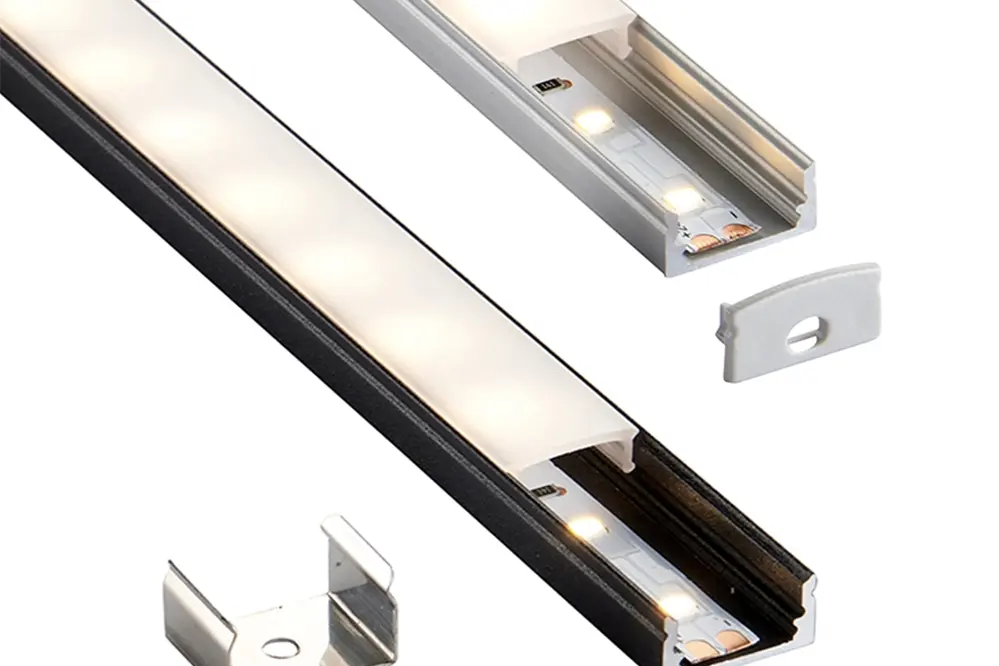
Enhanced lighting effects create striking visual appeal.
When placed on metal surfaces, LED strips can enhance the ambient light. The reflective nature of metal allows the LED light to spread more evenly, creating an attractive diffused glow. Consequently, this can be an excellent solution for illuminating spaces where even light distribution is a priority.
Durability and longevity are significant advantages.
LED strips are known for their energy efficiency – so not only will they help reduce energy consumption in the long run – but their minimal heat emission also preserves metal surfaces. This ensures a longer lifespan and consistent performance.
The combination of LED strips with metallic conductors facilitates superlative heat dissipation, accentuating the efficiency of LED lights. This symbiotic relationship between LEDs and metal surfaces can boost not only the aesthetics but also the technical performance of lighting systems.
Safety Considerations for Installing LED Strips on Metal
Given the inherent conductivity of metal, careful attention must be paid to avoid electrical hazards. Proper insulation around wiring and connections is critical for reducing the risk of short circuits.
Metal surfaces must be clean and free of debris to secure proper adhesion of the LED strips.
Using double-sided adhesive tape or mounting clips specifically designed for metal can mitigate slipping (potentially causing electrical faults) and detachment.
Protective coatings such as dielectric paint can further enhance safety by minimizing direct contact between the metal and electrical connections.
Before installation, verify the compatibility of the LED strip’s operating voltage with the power supply to prevent overloading, overheating, or failure of the lighting system.
Finally, ensure that the LED strip’s heat dissipation capability is not compromised. Adequate airflow and ventilation around the LED setup are crucial for maintaining optimal performance and safety.
Types of LED Strips Suitable for Metal Surfaces
When it comes to choosing LED strips for metal surfaces, look for high-quality, industrial-grade options designed with durability and safety in mind.
Opt for models specifically engineered with heat-resistant (or)adhesive to ensure reliable adhesion to metal surfaces, which tend to heat up during operation.
Brands labeled “heat-resistant” and “waterproof” are particularly effective in adhering to the surface’s demands.
Waterproof LED Strips
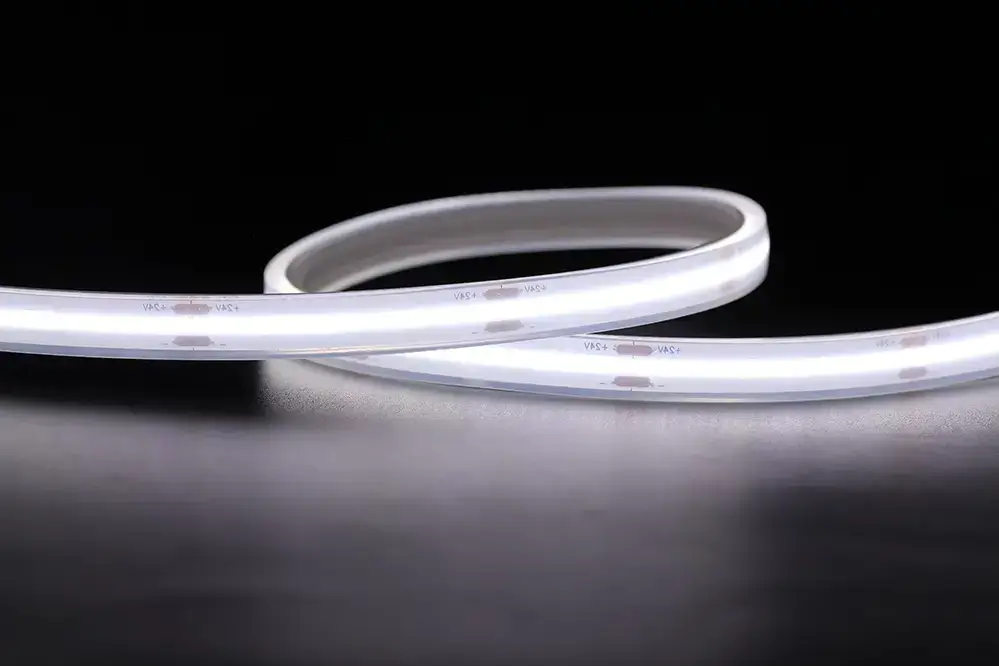
Waterproof LED strips stand resilient, ensuring your lighting system thrives even in damp environments. Designed with a protective coating, these strips are an excellent solution for areas exposed to moisture.
Perfect for outdoor installations, bathrooms, and kitchens, waterproof LED strips offer both aesthetic appeal and functionality. Their robustness extends beyond water resistance, often including UV protection for outdoor durability.
Waterproof LED strips can revolutionize wet area lighting, transforming spaces into dynamic, moisture-safe environments.
Installation is straightforward: simply clean the surface, use the appropriate adhesive backing, and connect to a power source. These steps ensure your space is illuminated with elegant, reliable lighting that endures. Build your vision confidently, knowing your choice in waterproof LED strips enhances both beauty and performance.
Flexible LED Strips
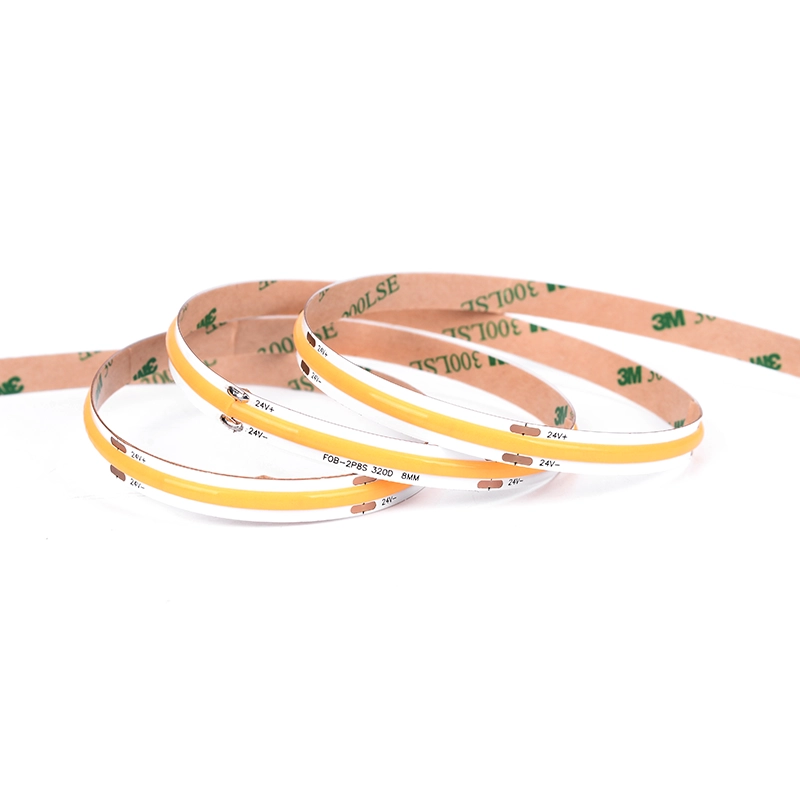
Flexible LED strips are incredibly versatile and easy to install.
These strips can bend and twist to fit virtually any shape. They are ideally suited to bring your creative lighting concepts to fruition, especially on curved surfaces, edges, or irregular areas. Consequently, they open up an array of possibilities for enhancing the aesthetic appeal of your spaces. Their adaptability ensures you can install them seamlessly on surfaces where rigid lighting solutions may falter.
Curves and corners are no longer challenges.
Flexible LED strips allow you to light up – and even highlight – areas that were previously difficult to illuminate. The capability to conform to diverse configurations guarantees top-notch illumination from any angle.
Moreover, flexible LED strips offer innovative lighting solutions for artistic applications, complementing complex architectural designs. Their modern, sophisticated technology represents where 2023 lighting trends are headed. Such adaptability encourages visionary designs and inspires advancements, elevating spaces with elegant, functional illumination tailored to your needs.
Preparing the Metal Surface for LED Strips
To achieve the optimal adhesion and performance of your LED strips on metal surfaces, preparation is paramount. This begins with ensuring the surface is clean.
Thoroughly clean the metal surface using isopropyl alcohol to remove any grease.
Once dry, assess the surface for any irregularities. Smooth any uneven areas with fine-grit sandpaper to create a uniform texture for consistent adhesion. This step is crucial for ensuring the strips adhere securely.
Lastly, ensure the metal surface is completely dry. If necessary, use a soft cloth to remove any remaining dust or particles. By meticulously preparing the surface, you set the foundation for a successful, durable LED strip installation that will stand the test of time.
Adhesive Options for LED Strips on Metal
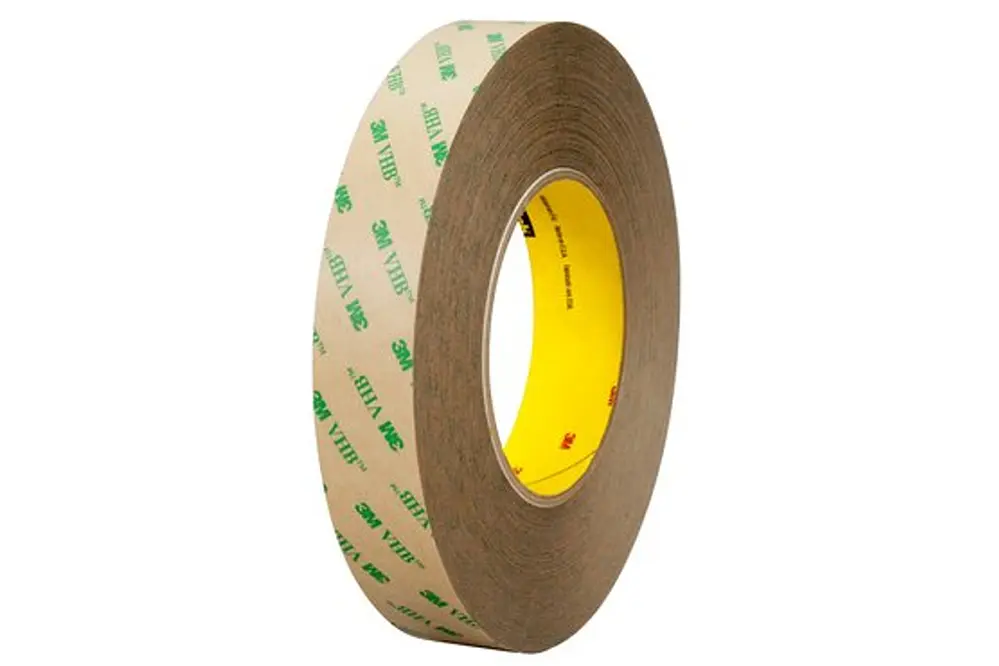
When considering how best to install LED strips on metal surfaces, it’s essential to explore the varied adhesive options available, guaranteeing a robust and lasting attachment.
First, the classic double-sided tape stands out for its convenience and effectiveness.
Specifically, high-strength double-sided tapes, like 3M VHB (Very High Bond) tapes, are highly recommended.
These tapes are designed to maintain strong adhesion even on smooth metal surfaces, providing reliable long-term performance.
Another effective adhesive option is silicone-based adhesive, which not only bonds securely but also offers some flexibility, accommodating slight metal expansions or contractions.
Furthermore, epoxy adhesives are renowned for their durability on metal surfaces, providing an incredibly strong bond. Applying epoxy requires careful handling to ensure a smooth and even application.
Ultimately, the key is to select an adhesive that’s suited to the specific demands of your environment. Securing strong bonds ensures your LED strips remain in place, delivering consistent, exquisite illumination.
Installing LED Strips on Metal Surfaces
Putting LED strips on metal opens up a plethora of design possibilities. The process of installing LED strips on metal surfaces requires meticulous preparation to ensure optimal adhesion. The first step is to thoroughly clean the metal surface, removing any dirt, oils, or residues that might hinder bonding. Additionally, using an appropriate primer on the metal can further enhance adhesion of the LED strip adhesive.
The application itself is straightforward. Peel the backing off the LED strip’s adhesive.
Press the adhesive side firmly onto the prepared metal surface. Ensure even pressure is applied across the strip to prevent any parts from lifting.
By following these steps, you can transform and elevate your design projects, whether for ambient lighting or dynamic display installations. An investment in time ensures a visually stunning and durable lighting solution. Embrace the potential of combining LED technology with metal, and witness the innovation in illumination it brings.
Securing and Hiding the Wires
Handling the wires is a pivotal step, both in terms of aesthetics and functionality. By neatly securing and concealing the wires, the overall appearance of your LED setup is polished and professional.
Cable clips are an excellent option. They can be adhered to the metal surface.
Additionally, adhesive-backed wire holders offer a more integrated look, seamlessly blending with the design.
Silicone adhesive can also be used to secure wires discretely along edges and corners. This method enhances both the safety and visual appeal of the installation.
Flex tubing is another solution, bundling wires together and providing an added layer of protection against external elements while maintaining a clean look.
Ultimately, the key is ensuring that wires aren’t left dangling. Thoughtfully securing and hiding them will uplift your metal LED strip installation, ensuring it stands out for all the right reasons.
Controlling LED Strips on Metal
When it comes to controlling LED strips on metal surfaces, there are several factors to consider.
Recent years, innovations in LED strip technology, particularly advancements in controllers, have made metal surface installations both achievable and efficient.
Now, it’s not just about where the LED strip’s placement is optimized but also about how you control the light settings to match your desired ambiance and functionality.
Wireless controllers are the standard now, making them ideal for metal applications. However, ensure to select 3M adhesive backings and robust controllers, to avoid issues with signal interference.
Experimenting with different light settings can greatly enhance the versatility and dynamic nature of your LED strips.
Enhancing Metal Features with LED Strips
Why not elevate your metal features by harnessing the power of LED strip lighting?
Recent years, advancements in LED technology have opened up a spectrum of possibilities for enhancing metal elements, catalyzing a new era of design innovation.
Today, it’s easier than ever to highlight metal features by integrating LED strips, allowing for a harmonious blend of aesthetic appeal and functional illumination. Imagine sleek, illuminated staircases or the soft glow accentuating metallic artwork.
With proper placement and secure installation, LED strips provide not only a visual enhancement but also a stylish and modern touch. When selecting LEDs, prioritize high-quality strips that offer flexibility, durability, and vibrant color options.
This combination ensures your metal installations remain radiant while standing the test of time.
Troubleshooting Common Issues
Even with the best intentions, challenges may arise during the installation of LED strips on metal surfaces.
If your LED strips aren’t adhering properly to a metal surface, consider cleaning the surface thoroughly. Grease, dirt, and dust can inhibit adhesion, so it’s imperative to ensure a spotless surface before application. Utilizing an alcohol-based cleaner can effectively remove residues and enhance adhesion strength.
In some cases, LED strips may flicker or not light up uniformly. This can be due to insufficient power supply or improper connection. Double-check all wiring and ensure that your power source matches the LED strip requirements to provide consistent, stable lighting.
Lastly, to prevent overheating, ensure adequate ventilation around your LED strips when mounted on metal. Metal surfaces can conduct and retain heat, potentially impacting the longevity and performance of the LEDs. Implementing heat management solutions, such as heat sinks or thermal pads, can significantly improve the operating environment for your LED strips.
Maintenance Tips for LED Strips on Metal
Maintaining LED strips on metal surfaces can optimize longevity, output quality, and overall visual appeal, providing a consistently vibrant lighting experience in various applications.
First, periodically inspect the adhesion of your LED strips to ensure they remain securely affixed.
Humidity, temperature fluctuations, and continuous usage can affect the adhesive’s durability, so reapply adhesive as needed.
Another key factor is cleaning the metal surface to prevent buildup of dust or grime, as these can impede heat dissipation and degrade performance.
Utilize a soft cloth and alcohol-based solution to gently clean the surface without causing scratches or corrosion.
Also, check the LED strip circuitry and wiring connections regularly. This can help identify potential issues early, ensuring a stable power supply.
Consistently adhering to these maintenance practices can significantly extend the lifespan of your LED strips, maintaining their brilliance and reliability over time.
Creative Ideas for Metal LED Strip Installations
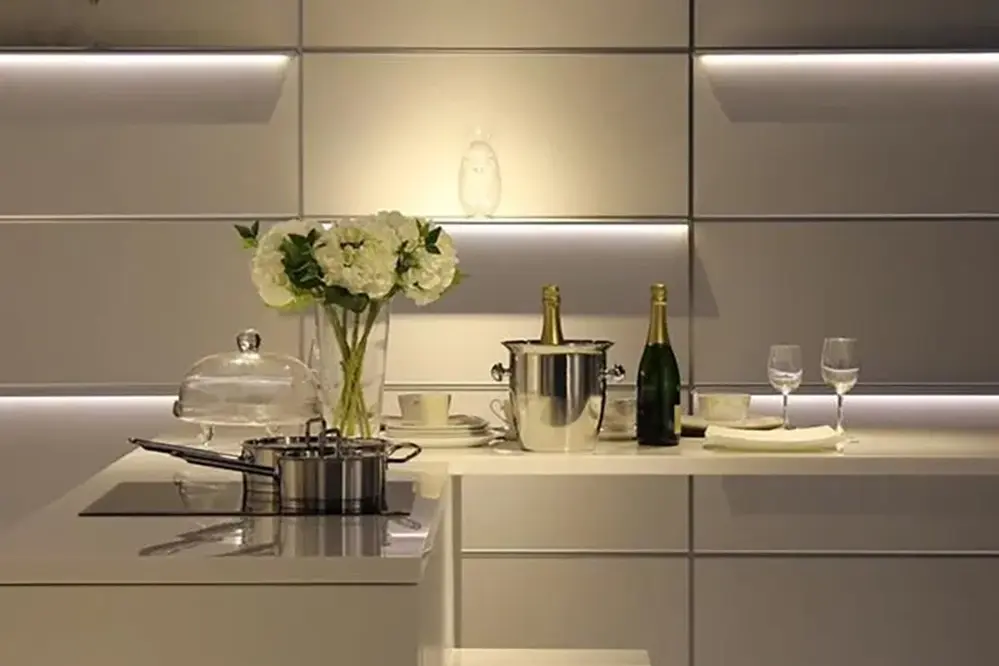
When applied imaginatively, metal LED strip installations can emerge as stunning focal points, enhancing spaces with vibrant illumination.
For instance, consider transforming your kitchen into a contemporary design haven by installing LED strips underneath metal countertops. This subtle, ambient lighting effect not only highlights the sleekness of the metal but also provides practical illumination for your workspace. Additionally, the reflective quality of the metal surface amplifies the light, creating an inviting and modern atmosphere.
Furthermore, use metal railings or balusters as a foundation for LED strips. This can provide both safety and aesthetic enhancement, illuminating staircase steps or outdoor pathways. The strips can be aligned along the railing, casting a focused glow that serves as a guide while exuding a stylish, futuristic vibe.
In commercial settings, such as restaurants or retail stores, consider backlighting metal displays or shelves with LED strips. These installations attract attention to featured products and create a visually stunning backdrop. Such creative implementations can distinguish your business environment, captivating customers and creating memorable, engaging experiences.
Conclusion
Yes, you can put LED strips on metal. This combination enhances the luminous effect due to metal’s reflective properties and ensures durability. The integration of LED strips on metal surfaces opens a world of design potential, producing vibrant and sophisticated visual experiences.
From practical applications in home settings to inventive solutions in commercial environments, LED strips on metal can transform spaces remarkably. This blend of functionality and aesthetic appeal creates captivating, modern, and practical lighting solutions, limited only by your creativity and vision.





